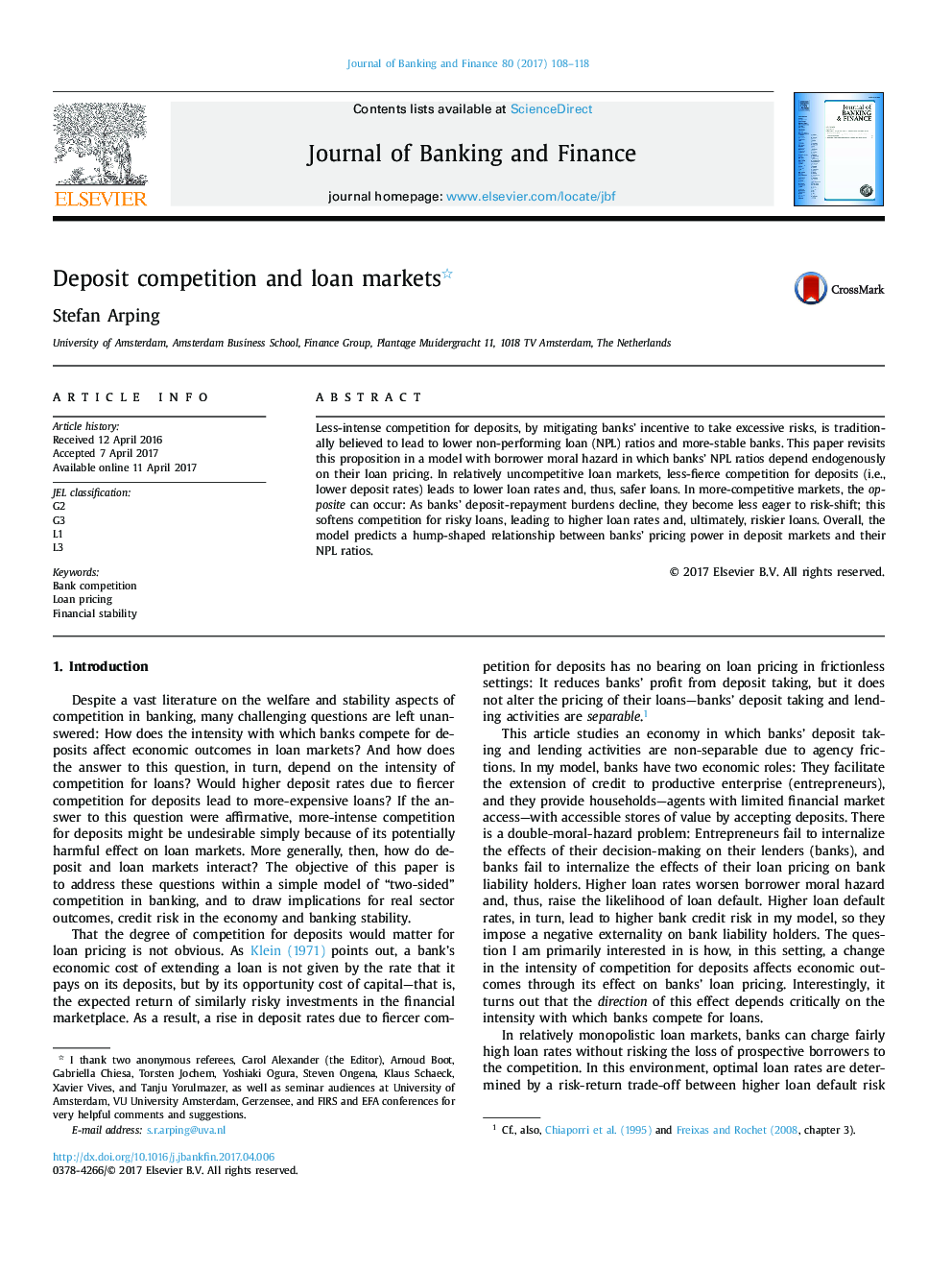| Article ID | Journal | Published Year | Pages | File Type |
|---|---|---|---|---|
| 5088095 | Journal of Banking & Finance | 2017 | 11 Pages |
Abstract
Less-intense competition for deposits, by mitigating banks' incentive to take excessive risks, is traditionally believed to lead to lower non-performing loan (NPL) ratios and more-stable banks. This paper revisits this proposition in a model with borrower moral hazard in which banks' NPL ratios depend endogenously on their loan pricing. In relatively uncompetitive loan markets, less-fierce competition for deposits (i.e., lower deposit rates) leads to lower loan rates and, thus, safer loans. In more-competitive markets, the opposite can occur: As banks' deposit-repayment burdens decline, they become less eager to risk-shift; this softens competition for risky loans, leading to higher loan rates and, ultimately, riskier loans. Overall, the model predicts a hump-shaped relationship between banks' pricing power in deposit markets and their NPL ratios.
Related Topics
Social Sciences and Humanities
Economics, Econometrics and Finance
Economics and Econometrics
Authors
Stefan Arping,
